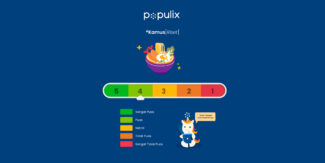In Southeast Asia (SEA), the fast-moving consumer goods (FMCG) industry is accelerating, pushed by rapid digital adoption, economic growth, cultural diversity, and evolving lifestyles. Consumer behavior is at the heart of this transformation.
Brands that can decode shifting needs, motivations, and preferences gain a decisive competitive edge. Those who fail to understand their consumers risk losing relevance in one of the most dynamic regions in the world.
Today, innovation in the FMCG sector no longer comes only from internal ideation or global trends. Instead, the real breakthroughs emerge when companies truly understand how consumers think, behave, and make purchase decisions.
From flavor innovation to packaging format, pricing strategy, and sustainability positioning, everything starts with insight.
This article explores how consumer behavior shapes product innovation in SEA, what unique characteristics define the region, and why market research is crucial for staying ahead.
Consumer Behavior in SEA: A Dynamic Landscape with Unique Drivers

Understanding consumer behavior in Southeast Asia requires acknowledging the region’s rich diversity. Each country, such as Indonesia, Malaysia, Singapore, Thailand, Vietnam, the Philippines, and others, has its own cultural norms, income segments, digital adoption rates, and local traditions. These factors significantly influence how people shop and what products they prefer.
Several key drivers shape SEA consumer behavior today:
1. Digital Acceleration and Omnichannel Lifestyle
SEA consumers are among the world’s fastest adopters of mobile-first behaviors. E-commerce, quick-commerce, and social commerce have all surged, reshaping purchasing habits. Consumers seamlessly shift between offline discovery and online purchasing.
FMCG brands now innovate not only on the product level but also on the format, offering items suitable for online bundling, subscription models, fast delivery, and convenience-driven lifestyles.
2. Rising Middle Class and Shifting Aspirations
As disposable income increases, consumers demand better quality, healthier options, and products that reflect modern aspirations. Premiumization trends rise across categories like skincare, snacks, beverages, and home care.
Middle-class SEA consumers often experiment with new products quickly, making the region fertile ground for FMCG innovation, provided that brands correctly interpret behaviors and taste preferences.
3. Cultural Nuances and Local Preferences
Although global trends influence SEA consumers, local tastes strongly dictate final preferences. Examples include:
- Indonesians prefer tropical or sweet flavor profiles.
- Filipinos are showing strong loyalty to household staples.
- Thais are responding well to bold, spicy variants.
Innovation must incorporate these insights into flavor, scent, texture, packaging, and messaging.
4. Increasing Health and Sustainability Awareness
Health-conscious behavior grows rapidly, especially in post-pandemic settings. Clean labels, lower sugar, plant-based ingredients, and environmental commitments gain traction. But adoption levels vary by country.
Understanding which markets prioritize sustainability and which focus more on price sensitivity is essential for creating relevant FMCG products across SEA.
Related article: Brand Strategy for the SEA Market Using Real Consumer Data
How Consumer Behavior Insights Drive FMCG Innovation
To compete in SEA’s hyper-dynamic market, brands must move beyond assumptions and rely on accurate, timely insights. Here is how Consumer Behavior directly shapes FMCG innovation:
1. Pinpointing Unmet Needs and New Opportunities
Consumer motivations often reveal gaps in the market. For example:
- The rise of single-person households increases demand for smaller packaging sizes.
- Busy urban lifestyles boost the need for ready-to-eat meals and quick snacks.
- Higher health awareness drives the demand for sugar-free or functional beverages.
- By analyzing behaviors and daily routines, brands can uncover latent needs that consumers may not explicitly articulate.
2. Localized Product Development
Product localization, guided by real consumer insight, helps brands avoid costly missteps. Understanding flavor preferences, scent sensitivities, dietary restrictions, or cultural norms ensures new products resonate with local consumers.
For instance, a snack flavor that works in Thailand might not succeed in Singapore. Meanwhile, Indonesian consumers may respond differently to packaging size and pricing than Vietnamese consumers.
3. Price Strategy Aligned with Behavior
In SEA, price sensitivity varies significantly across markets. Consumers may switch brands if prices fluctuate, but they also appreciate value-added benefits.
Behavioral insights help brands determine:
- Optimal price tiers
- Promotional triggers
- Bundle strategies
- Perceived value differences
This ensures new product launches hit the right balance between affordability and premium positioning.
4. Packaging Innovation Shaped by Usage Behavior
Packaging plays a crucial role in FMCG innovation. Consumer observations reveal:
- How often do they use the product
- Where do they store it
- Whether they need portability
- Which visual cues drive purchase
In markets where mobility is high, smaller, on-the-go packs are more successful. In family-oriented households, value-sized packaging thrives.
5. Sustainability and Ethical Expectations
SEA consumers are increasingly expecting brands to reduce plastic waste, source their products ethically, and be transparent about their ingredients. However, not all markets weigh sustainability equally.
Understanding actual behavioral commitment, beyond claimed attitudes, helps brands determine which sustainability innovations matter most, such as refill stations, biodegradable packaging, or responsibly sourced ingredients.
Market Research Populix as Your FMCG Insight Partner

SEA’s complexity demands localized, rapid, and reliable insights. This is where Market Research Populix provides a clear advantage.
Use Populix to test new product concepts and measure consumer responses across key markets! Because Populix can deliver access to diverse respondents across Southeast Asia, enabling FMCG brands to:
- Run concept tests for new product ideas
- Conduct taste tests, packaging evaluations, and pricing studies
- Understand cultural and behavioral nuances across SEA countries
- Gather fast, accurate feedback for innovation cycles
With strong capabilities in market research, Populix empowers brands to launch smarter, reduce risk, and stay competitive in the SEA FMCG landscape.
Whether you are launching a new flavor, developing new packaging, or exploring premium product lines, deep consumer insight is essential.
And with Market Research Populix, you can confidently test ideas, validate concepts, and refine your strategy based on real consumer responses. Let’s Contact Us to get started with our market research solutions for your business!
Consumer behavior will continue shaping the future of FMCG in SEA, and brands equipped with the right insights will lead the innovation wave.

Related article: Market Research Solution, Driving Business Growth Across SEA

 IDN
IDN
 ENG
ENG 


